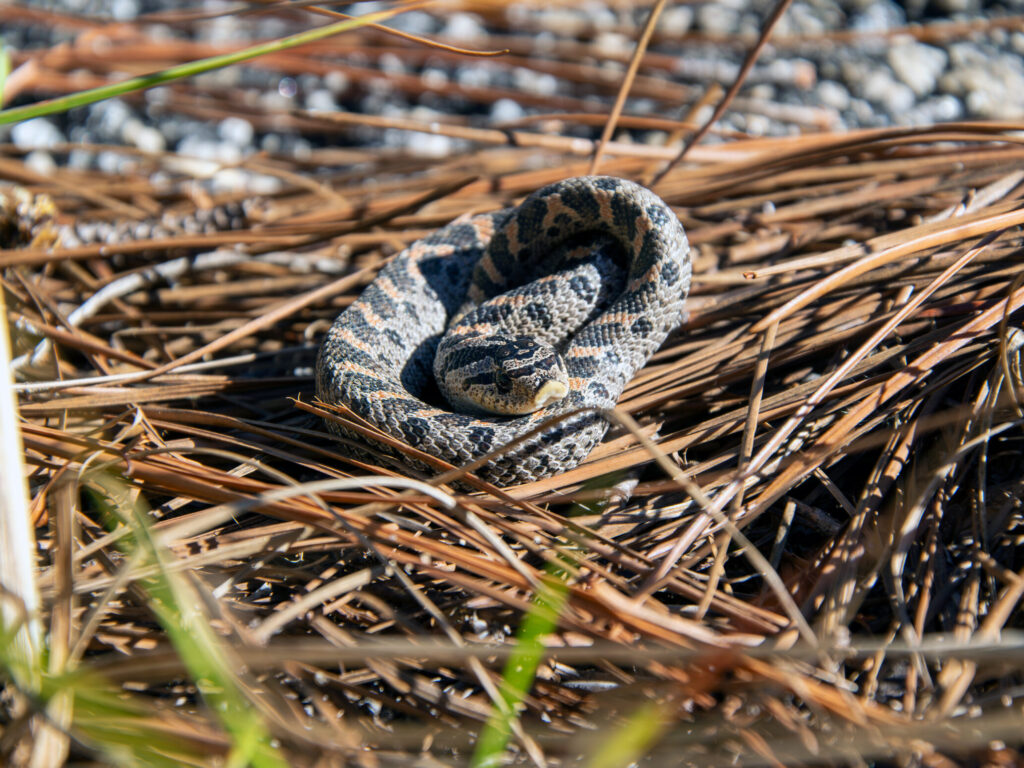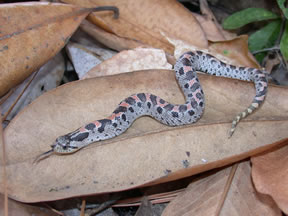Southern Hognose Snake (Heterodon simus)
Southern Hognose Snake (Heterodon simus)
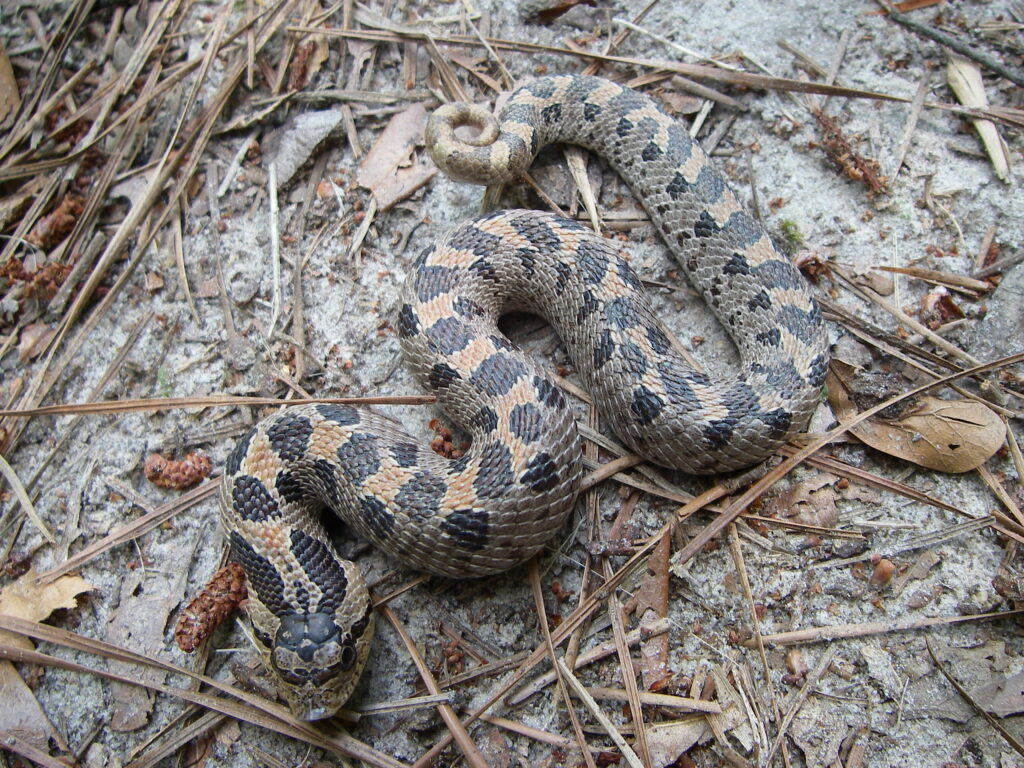
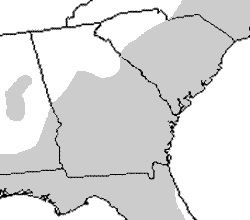
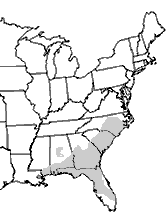
Description: A small, stout snake reaching up to 61 cm (24 in). Distinguished by its sharply upturned snout. Unlike the variable Eastern Hognose (H. platirhinos), the Southern Hognose is always patterned—gray, tan, or reddish with a row of large, dark blotches down the back and alternating smaller blotches along the sides. Never solid black. The underside of the tail matches the belly, whereas in the Eastern Hognose the tail is lighter. Snout is more sharply upturned than that of its eastern relative. When threatened, performs classic hognose displays: hissing, neck spreading, mock striking, and feigning death. Females grow larger than males; juveniles look like small adults.
Range and Habitat: Historically found across the Coastal Plain from southern North Carolina through most of Florida and west to southern Mississippi. Today, restricted to scattered populations in North Carolina, South Carolina, Georgia, and Florida, with notable persistence at the Savannah River Site. Closely tied to xeric sandy habitats such as sandhills, pine flatwoods, sand ridges, and coastal dunes, though may persist in agricultural or suburban areas with suitable sandy soils.
Habits: Diurnal and most often observed on warm spring and fall mornings, frequently crossing roads through sandy landscapes. Highly fossorial, spending much of its time underground. When confronted, it relies on elaborate defensive displays rather than biting. Diet consists almost exclusively of toads, which they subdue with enlarged rear fangs that puncture inflated toads. Females lay 6–14 eggs in early summer in sandy soils or under logs; hatching occurs in September–October.
Conservation Status: A species of conservation concern due to significant range-wide declines. Absent from Alabama and Mississippi since the 1970s and now found only in scattered populations across its former range. Declines attributed to habitat loss (longleaf pine forest conversion, urban development, agriculture) and invasive fire ants. Secretive habits have made population monitoring difficult. Legally protected in Georgia.
